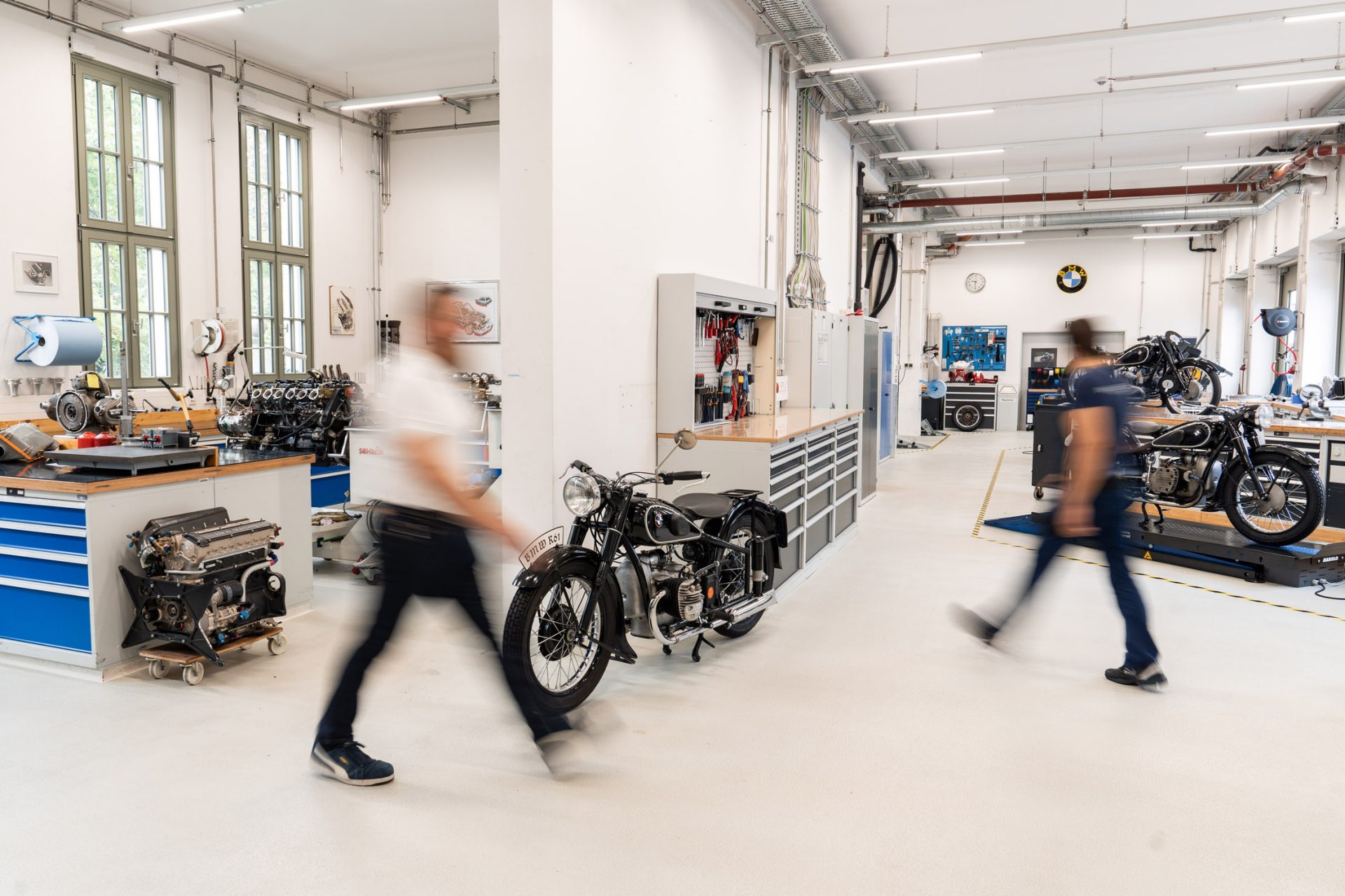Welcome to your digital gateway to the fascinating history of the BMW Group and its brands BMW, BMW Motorrad, MINI, and Rolls-Royce. Discover everything about classic cars, exciting stories, exclusive insights, as well as services such as restoration, spare parts catalogues, and much more on our website. Immerse yourself in the past and experience how it inspires the future. This is where tradition meets innovation.
About us.

The BMW
Group archive.
The BMW Group Archive is the place to go to find out all about the history of the BMW Group, whether related to the company, the brand, or the products. The database contains annual reports, BMW plant newspapers, pictures, and films as well as a wealth of information on all products with their technical and historical data. The BMW Group Archive is not only open to owners and friends of all our brands but also serves as a sound source of information for journalists, authors, and academics.
BMW from then to now:
The BMW Museum.
BMW looks back on over a hundred years of eventful history. Its past is kept alive in the BMW Museum. In this architectural landmark, the iconic brand becomes a tangible story – from its beginnings to the present day.


Restoration
and parts supply.
At the BMW Group Classic Workshop, your car is in the best of hands.
Our employees are both passionate classic and classics-to-be car enthusiasts and proven experts in complete restoration, repair, and maintenance.
We maintain, service, and repair your vehicle with care and attention, always keeping originality and fitting accuracy in mind. Because one-of-a-kind classic vehicles deserve one-of-a-kind service.
BMW Clubs
& Community.
More than 230,000 members in around 800 recognised BMW Clubs are impressive proof of the unbroken fascination for the BMW Group and its vehicles. BMW Club and Community Management, or BCCM for short, is the global interface for all official BMW Clubs and BMW Motorcycle Clubs. It provides help and advice on all matters and tasks relating to club life and actively supports the organisation and implementation of meetings and events. In this way, it keeps the BMW brand alive and helps its fans to network with each other.


Events
and functions.
You can look forward to numerous events that BMW Group Classic organises or takes part in. We celebrate our brands and enjoy exchanging ideas.
BMW history
is treasured here.
The four brands of the BMW Group are linked by an eventful history. BMW Group Classic preserves this history by setting itself the task of documenting and reappraising the development of the brands since the company was founded at the beginning of the 20th century and drawing inspiration from it for the challenges of the future.


Our workshop
rooms.
The historic gatehouse offers four modern workshop rooms for 10 to 30 people, which are named after iconic BMW Group vehicles such as the Rolls-Royce Phantom and the MINI Cooper.
Behind the Scenes
– Insights into BMW Group Classic.
BMW Group Classic combines history with the future and preserves the BMW Group's classic cars in all their glory. We restore and maintain historic vehicles with dedication and expertise. Take a look behind the scenes and see how tradition and innovation come together in our daily work.


























